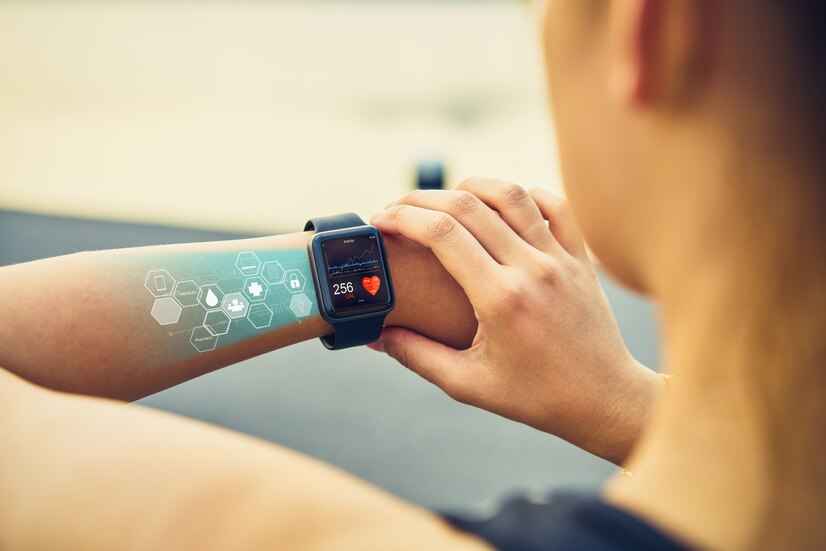Calculate maximum target heart rate and estimated maximum heart rate to plan intense exercises

Medically Reviewed By
Dr Divya Rohra
Written By Dr. Ragiinii Sharma
on Mar 15, 2022
Last Edit Made By Dr. Ragiinii Sharma
on Jun 25, 2025

Do you often step back and wonder, “Why am I not seeing notable changes in my body despite working out every day?” And, the question is, “Are you working out hard, or are you hardly working out?”
Doing any activity at the correct intensity yields the best results. The same applies to your workout sessions as well. Sometimes, pushing yourself too hard on a treadmill can lead to fatal results. Similarly, not doing “enough” put all your workout efforts to waste.
This article will explore more about the maximum target heart rate and estimated maximum heart rate that will help you plan your workout sessions for the maximum yield.
What is your Maximum Heart Rate?
The maximum heart rate, abbreviated as Max HR or MHR, is the maximum number of beats your heart can make per minute when put under maximum stress. This is the maximum that an athlete or an ordinary individual can stretch without affecting their heart function.
Knowing the maximum heart rate allows the coaches and trainers to curate an aligned training process and routine surrounding those numbers. This also allows the trainers to understand what is a dangerous heart rate and avoid crossing those numbers.
There is no “standard” to a maximum heart rate. It varies from person to person, their heart functions, and the kind of activity they indulge in regularly.
How to Calculate Maximum Heart Rate?
Typically, there are three standard ways to calculate the maximum heart rate of a person. The process is straightforward and involves numbers and formulas to some extent. Here’s how you can do it:
1. Use the Maximum Heart Rate Formula
There are three options when estimating the maximum heart rate using a formula. You have:
- [ 220 – Age ]
- [ 207 – 0.7 x Age ]
- [ 211 – 0.64 x Age ]
None of the available formulas is gender-adjusted, which leaves room for inaccuracies. That said, out of the three, the last one is the most accurate and is used for the majority of the professional calculations, especially for athletes and sportspeople.
The formulas give a theoretical outlook on the MHR, which is subject to change in practical application. This means that a person cycling will have a higher MHR than a person swimming.
2. Use a Laboratory test
If you don’t want to stick to theoretical learning and want better accuracy with practical numbers, a laboratory test can help.
The VO2 max test determines the maximum heart rate and the aerobic and anaerobic thresholds of the individual. This is more common in athletes who train for specific sports and need more accurate readings.
3. Use a Field test
The last choice in the lot is the field test. This is ideal for advanced athletes with a solid aerobic foundation. This one isn’t an ideal marker test for beginners, mainly because it leads to potent complications and inaccuracies in the reading.
This is a very rigorous form of testing and is not ideal for individuals with cardiovascular diseases or other chronic conditions.
What is Target Heart Rate?
On the other hand, the target heart rate reflects the optimal heart rate during an exercise. It determines how fast the heart should be beating during an exercise, which could be a heart rate over 200 bpm when exercising or less, depending on the age and associated factors.
How can I calculate the Target Heart Rate?
When you determine your estimated target heart rate, there are certain factors in play. Typically, the target heart rate is expressed between 50-85% of the individual's maximum heart rate.
So, if a person’s maximum heart rate is 170 beats per minute (for a 50-year-old), their target heart rate would be between 50% to 85% of the MHR, which is 85 to 145 beats per minute.
For more accuracy and practical estimation, doctors suggest wearing a fitness band to check the target heart rate and know more about what is PRbpm means.
Target Heart Rate and Estimated Maximum Heart Rate – How to Estimate?
When it comes to exercising, there are two primary categories. You have:
- Moderate intensity exercises
- Vigorous-intensity exercises
The maximum and estimated target heart rate for them is different. Let us expand on that further:
Moderate intensity exercises
The target heart rate for moderate-intensity exercise typically ranges between 64% and 76% levels. So, when we take an example of a 30-year-old individual with a maximum heart of 190 beats per minute, the target heart rate for moderate-intensity exercise would be:
64% level: 190 x 0.64 = 121.6 bpm
76% level: 190 x 0.76 = 144.4 bpm
So, the ideal estimated target heart rate for moderate-intensity exercise for a 30-year-old individual is between 122-144 bpm.
Vigorous-intensity exercises
The target heart rate for vigorous-intensity exercises is between 77% and 93%, slightly higher than the moderate. Similarly, taking an example of a 30-year-old individual with an MHR of 190 beats per minute, the target heart rate for their vigorous exercise routine would be:
77% level: 190 x 0.77 = 146.3 bpm
93% level: 190 x 0.93 = 176.7 bpm
So, the ideal estimated target heart rate for vigorous-intensity exercise for a 30-year-old individual is between 146-177 bpm.
Remember that these readings and numbers are theoretical. The estimated target and maximum heart rate are subjective to an individual’s physical well-being. If they struggle with a chronic condition or a cardiovascular disease, the numbers will change significantly.
Conclusion
Having a comprehensive idea of the maximum target heart rate and estimated maximum heart rate allows individuals to make the most out of their exercise routine. Not only do you get to churn the maximum impacts on your health, but it also reduces the risks of complications that arise with overexertion during an exercise.



